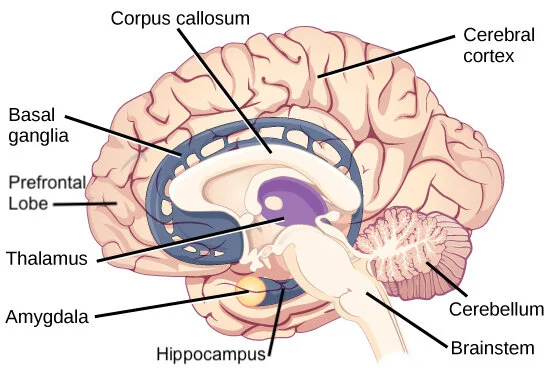With growing globalization, interconnectedness, and complexity of our societies, ‘soft skills’ have become increasingly important. Social competences, such as empathy, compassion, and taking the perspective of another person, allow for a better understanding of others’ feelings and different beliefs, and are crucial for successful cooperation.
Research finds that compassion-centered awareness training decreases stress and anxiety, increases attention, improves interpersonal relationships, strengthens empathy and compassion towards oneself and others, and promotes many other benefits which create greater well-being, resiliency, and life satisfaction.
Benefits Include
ATTENTION
Improved ability to direct and sustain attention and concentration in daily life, including the ability to attend to one’s inner world of thoughts and emotions.
SELF-AWARENESS
Increased self-awareness, including awareness of one’s emotions, values and needs. Increased ability to discern what brings about greater wellbeing.
SELF-COMPASSION
Increased understanding of one’s self and emotions leading to greater self-compassion and self-acceptance. Which supports conditions for growth and transformation.
SELF-REGULATION
Greater emotional flexibility, enabling one to respond constructively to impulses and emotions, and cultivate behaviors and attitudes that increase well-being. Greater ability to regulate one’s body and nervous system.
INTERPERSONAL AWARENESS
Improved ability to recognize our interdependence and common humanity; that we all wish to be happy and avoid hardship. Increased appreciation for the diversity, uniqueness, and difference of individuals and groups and the way they add to our collective life.
COMPASSION FOR OTHERS & RELATIONSHIP SKILLS
Increased ability to understand other’s emotions and needs, increasing compassion and kindness towards others. Increased empathic listening, skillful communication, and ability to respond constructively to conflict and facilitate collaboration, reconciliation, and peaceful relations.
COMPASSIONATE AWARENESS TRAINING CHANGES THE BRAIN
The amygdala is the primary structure of the brain responsible for detecting and reacting to emotions including difficult or strong emotions such as anxiety, fear and aggression. Compassionate-awareness training helps calm the amygdala.
The hippocampus is critical in helping to regulate the amygdala and in learning and memory. Through compassionate-awareness training the hippocampus becomes more activated.
The prefrontal cortex contributes to a wide variety of executive functions associated with maturity including: focusing one’s attention, predicting the consequences of one’s actions; impulse control and managing ones emotional and behavioral reactions, all necessary for making wise decisions. This part of the brain is more activated and developed following compassionate-awareness training.
WE ARE WIRED FOR COMPASSION
Our natural connectivity and compassionate instincts are evident in how our brains react to pain. When we experience pain the anterior cingulate region of our brain lights up. And, if we see someone else suffering the same part of the cortex is activated. We have the same pain response to other people’s pain as we do our own, researchers refer to this as being “wired for empathy”.
The brain, in right profile with the glossopharyngeal and vagus nerves Photolithograph, 1940, after a woodcut, 1543.. Credit: Wellcome Collection
Several other areas of the brain are also activated when we see other’s suffering, including the amygdala - the brain’s threat detector, as we worry that the same suffering may come to us. Another area is “a very old part of the mammalian nervous system called the periaqueductal gray, way down in the center of the brain. In mammals, this region is associated with nurturing behavior. We don’t just see suffering as a threat. We also instinctively want to alleviate that suffering through nurturance.” - Dacher Keltner, Ph.D., is the founding director of the Greater Good Science Center and a professor of psychology and researcher at the University of California, Berkeley.
The vagus nerve (image at left), a part of the autonomic nervous system, is another example of how our bodies are wired for compassion. The vagus nerve starts at the top of the spinal cord and goes down your neck into your chest, coordinating breathing and heart rate. When you take a deep breath to calm down, the vagus nerve controls the relationship between the breathing and the calming. It then goes down into your spleen, liver and gut, controlling many digestive processes. Research has shown the vagus nerve regulates your inflammation response to disease and the stronger the vagus nerve, the stronger your immune system response.
When we see someone suffering, or they tell us of a sad experience, it activates the vagus nerve. Also, when someone tells us an inspiring story the vagus nerve is activated. Research shows the more you feel compassion the stronger the vagus nerve response.
Furthermore, people who have more positive emotions on a daily basis, stronger positive relationships, and better social support networks have stronger vagus nerves. Research has shown consciously self-generating positive emotions and kind-heartedness, toward ones self and others, creates a feeling of being safe and sound via the vagus nerve and creates a healthier vagal tone, which has been implicated in improved health and well-being.
FURTHER READING
Condon, P., Desbordes, G., Miller, W. B., & DeSteno, D. (2013). Meditation increases compassionate responses to suffering. Psychological Science, 24(10), 2125–2127.
Cosley, B. J., McCoy, S. K., Saslow, L. R., Epel, E. S. (2010). Is Compassion for Others Stress Buffering? Consequences of Compassion and Social Support for Physiological Reactivity to Stress. Journal of Experimental Social Psychology. 45(5), 816-823.
Desbordes, G., Negi, L. T., Pace, T. W. W., Wallace, B. A., Raison, C. L., Schwartz, E. L. (2012). Effects of mindful-attention and compassion meditation training on amygdala response to emotional stimuli in an ordinary, non-meditative state. Frontiers in Human Neuroscience, 6.
Fredrickson, B. L., Cohn, M. A., Coffey, K. A., Pek, J., Finkel, J. M. (2008) Open hearts build lives: positive emotions, induced through loving-kindness meditation, build consequential personal resources., Journal of personality and social psychology 95(5), p. 1045-62, pubmed central, doi:10.1037/a0013262
Hölzel, B. K., Carmody, J., Evans, K. C., Hoge, E. A., Dusek, J. A., Morgan, L., … Lazar, S. W. (2010). Stress reduction correlates with structural changes in the amygdala. Social Cognitive and Affective Neuroscience, 5(1), 11–17.
Jennings, P. A., Frank, J. L., Snowberg, K. E., Coccia, M. A., & Greenberg, M. T. (2013). Improving Classroom Learning Environments by Cultivating Awareness and Resilience in Education (CARE): Results of a Randomized Controlled Trial. School Psychology Quarterly, 28(4), 374–390.
Kemeny, M. E., Foltz, C., Cavanagh, J. F., Cullen, M., Giese-Davis, J., Jennings, P., … Wallace, B. A. (2012). Contemplative/emotion training reduces negative emotional behavior and promotes prosocial responses. Emotion, 12(2), 338.
Klimecki, O. M., Leiberg, S., Lamm, C., Singer, T. (2013) Functional neural plasticity and associated changes in positive affect after compassion training, Cerebral Cortex 23(7), p. 1552-1561, pubmed, doi:10.1093/cercor/bhs142
Lutz, A., Slagter, H. A., Dunne, J. D., & Davidson, R. J. (2008). Attention regulation and monitoring in meditation. Trends in Cognitive Sciences, 12(4), 163–169.
Mascaro, J. S., Rilling, J. K., Negi, L. T., and Raison, C. L. (2012). Compassion meditation enhances empathic accuracy and related neural activity. Social Cognitive and Affective Neuroscience, 8: 48–55.
Meyer, M. L., Masten, C. L., Ma, Y., Wang, C., Shi, Z., Eisenberger, N. I., Han, S. (2012)Empathy for the Social Suffering of Friends and Strangers Recruits Distinct Patterns of Brain Activation., Social cognitive and affective neuroscience, pubmed, doi:10.1093/scan/nss019
Neff, K. D., & Germer, C. K. (2013). A Pilot Study and Randomized Controlled Trial of the Mindful Self-Compassion Program. Journal of Clinical Psychology, 69(1), 28–44.
Ozawa-de Silva, B. R., Dodson-Lavelle, B., Raison, C. L., Negi, L. T. (2012). Scientific and Practical Approaches to the Cultivation of Compassion as a Foundation for Ethical Subjectivity and Well-Being. Journal of Healthcare, Science, and the Humanities, 2:145-161.
Pace, T. W. W., Negi, L. T., Adame, D. D., Cole, S. P., Sivilli, T. I., Brown, T. D., Issa, M. J., Raison, C.L. (2009). Effect of compassion meditation on neuroendocrine, innate immune and behavioral responses to psychosocial stress. Psychoneuroendocrinology, 34: 87–98.
Van Dam, N. T., Sheppard, S. C., Forsyth, J. P., Earleywine, M. (2011) Self-compassion is a better predictor than mindfulness of symptom severity and quality of life in mixed anxiety and depression., Journal of anxiety disorders 25(1), p. 123-30, Elsevier Ltd, pubmed, doi:10.1016/j.janxdis.2010.08.011
Weng, H. Y., Fox, A. S., Shackman, A. J., Stodola, D. E., Caldwell, J. Z. K., Olson, M. C., Rogers, G. M., Davidson, R. J. (2013) Compassion Training Alters Altruism and Neural Responses to Suffering, Psychological Science 24(7), p. 1171-80, pubmed central, doi:10.1177/0956797612469537









